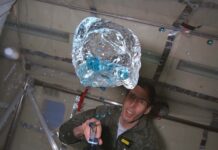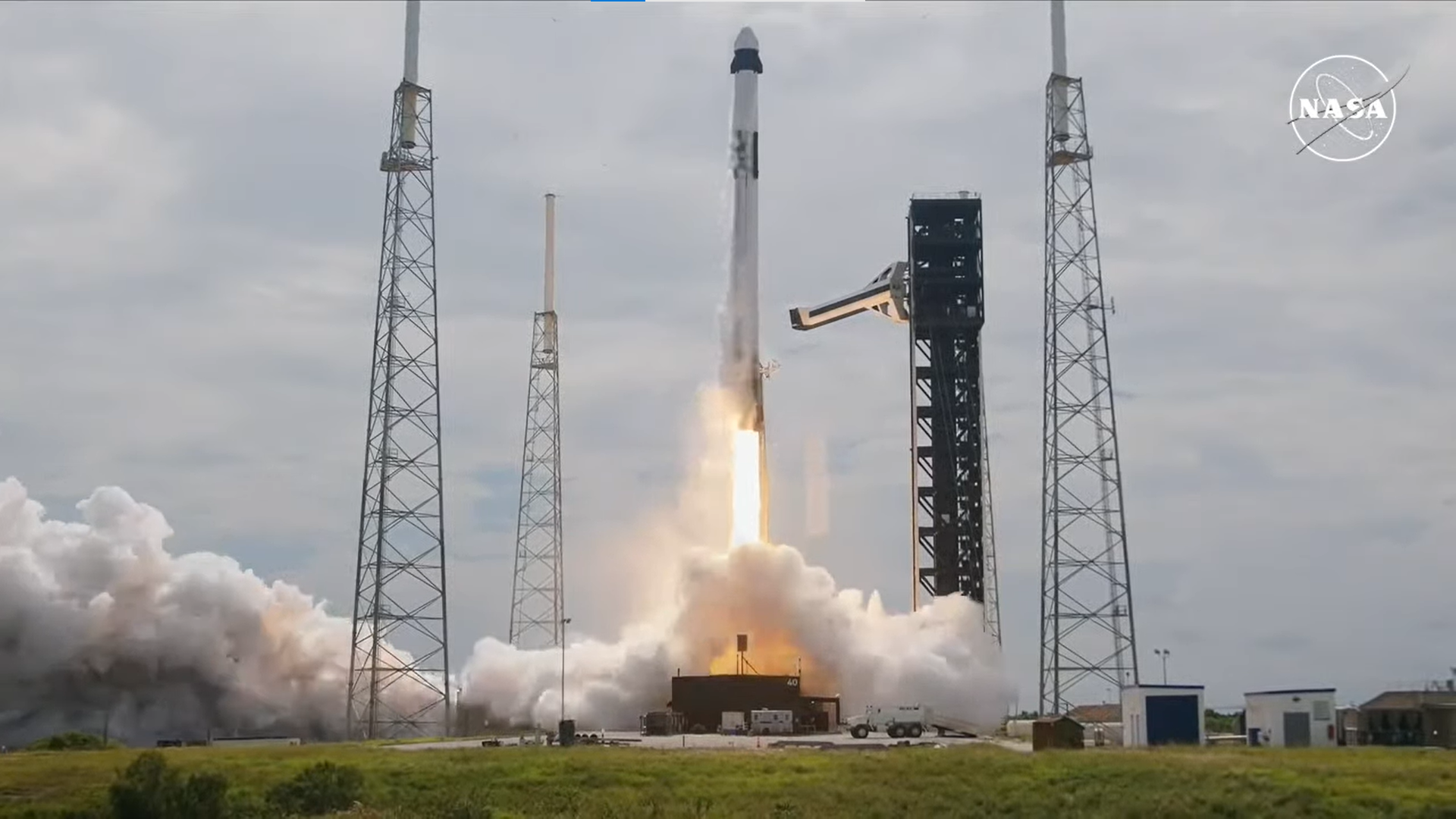NASA’s SpaceX Crew-9 Mission Successfully Launched to International Space Station
NASA’s SpaceX Crew-9 mission has successfully embarked on its journey to the International Space Station (ISS), marking a significant milestone in human spaceflight. The launch occurred at 1:17 p.m. EDT on Saturday from Space Launch Complex-40 at Cape Canaveral Space Force Station in Florida. This mission is particularly notable as it is the first human spaceflight mission to be launched from this complex and represents NASA’s ninth commercial crew rotation mission to the ISS.
Aboard the Dragon spacecraft, propelled by a SpaceX Falcon 9 rocket, are NASA astronaut Nick Hague and Roscosmos cosmonaut Aleksandr Gorbunov. The spacecraft is scheduled to dock autonomously with the forward-facing port of the station’s Harmony module at approximately 5:30 p.m. on Sunday, September 29. Upon arrival, Hague and Gorbunov will join the crew of Expedition 72 for a five-month stay aboard the orbiting laboratory.
“This mission required a lot of operational and planning flexibility. I congratulate the entire team on a successful launch today, and godspeed to Nick and Aleksandr as they make their way to the space station,” stated NASA Administrator Bill Nelson. “Our NASA wizards and our commercial and international partners have shown once again the success that comes from working together and adapting to changing circumstances without sacrificing the safe and professional operations of the International Space Station.”
During the Dragon spacecraft’s journey, SpaceX will oversee a series of automated maneuvers from its mission control center in Hawthorne, California. Concurrently, NASA will manage space station operations from the Mission Control Center at the agency’s Johnson Space Center in Houston.
NASA has planned to provide live coverage of the rendezvous, docking, and hatch opening events, starting at 3:30 p.m. on September 29. The coverage will be available on NASA+ and the agency’s official website. Additionally, NASA will broadcast the crew welcome ceremony once Hague and Gorbunov are aboard the space station. For those interested in watching, NASA content can be streamed through various platforms, including social media.
Once aboard the ISS, Hague and Gorbunov will join the Expedition 72 crew, which includes NASA astronauts Michael Barratt, Matthew Dominick, Jeanette Epps, Don Pettit, Butch Wilmore, and Suni Williams, as well as Roscosmos cosmonauts Alexander Grebenkin, Alexey Ovchinin, and Ivan Vagner. This brings the total number of crew members on the space station to 11 for a short period until Crew-8 members Barratt, Dominick, Epps, and Grebenkin depart the space station in early October.
The crew is set to conduct over 200 scientific investigations during their mission. These studies include research on blood clotting, the effects of moisture on plants grown in space, and vision changes in astronauts. These experiments are crucial for understanding how the microgravity environment of space affects biological processes and for preparing for future long-duration missions.
The importance of this mission extends beyond the immediate scientific research. NASA continues to maximize the use of the ISS, which has been continuously inhabited and operational for over 23 years. The research and technology tested aboard the ISS not only benefit life on Earth but also pave the way for future missions, including NASA’s Artemis missions to the Moon and eventually to Mars. The ISS serves as a testbed for developing technologies and skills needed for future commercial destinations in low Earth orbit and deep space exploration.
More about Crew-9
Nick Hague, the commander of Crew-9, is making his second trip to the ISS. He was selected as an astronaut in 2013 and will serve as a mission specialist during Expedition 72/73. You can follow his journey on social media platforms such as X (formerly known as Twitter) and Instagram under the handle @AstroHague.
Aleksandr Gorbunov, a Roscosmos cosmonaut, is embarking on his first mission to space. He will serve as a flight engineer during Expeditions 72/73.
For more detailed information about NASA’s SpaceX Crew-9 mission and the agency’s Commercial Crew Program, you can visit NASA’s official website at [NASA Commercial Crew](https://www.nasa.gov/commercialcrew).
Good to Know
The success of the Crew-9 mission is a testament to the collaborative efforts of international partners and commercial entities. SpaceX, a private aerospace manufacturer, and space transportation company, has been pivotal in advancing space travel through its innovative technologies and close partnership with NASA. The Falcon 9 rocket, used for this mission, is renowned for its reusability, significantly reducing the cost of access to space.
Moreover, the research conducted aboard the ISS has far-reaching implications. For instance, studies on blood clotting can lead to better medical treatments on Earth, while plant growth experiments can contribute to sustainable agriculture practices in challenging environments. Understanding vision changes in astronauts is also crucial for ensuring the health and safety of crew members on long-duration missions.
The ISS continues to be a hub of scientific discovery and technological innovation. As NASA and its partners push the boundaries of what is possible in space exploration, missions like Crew-9 play a vital role in ensuring the sustained human presence in space and preparing for future explorations beyond low Earth orbit.
For those keen on following space missions and other NASA activities, staying connected through NASA’s streaming services and social media platforms offers a front-row seat to the latest advancements and discoveries in space exploration.
The Crew-9 mission exemplifies the spirit of exploration and the relentless pursuit of knowledge that drives humanity to reach for the stars. As Hague and Gorbunov, along with their crewmates, embark on their scientific endeavors aboard the ISS, they contribute to a legacy of discovery that transcends borders and unites us in our quest to understand the universe.
For more information and updates on space missions, visit NASA’s [official website](https://www.nasa.gov).
This article has provided a comprehensive overview of the Crew-9 mission, its significance, and the broader context of space exploration efforts. Stay tuned for more updates and insights into the world of space science and technology.
For more Information, Refer to this article.






























